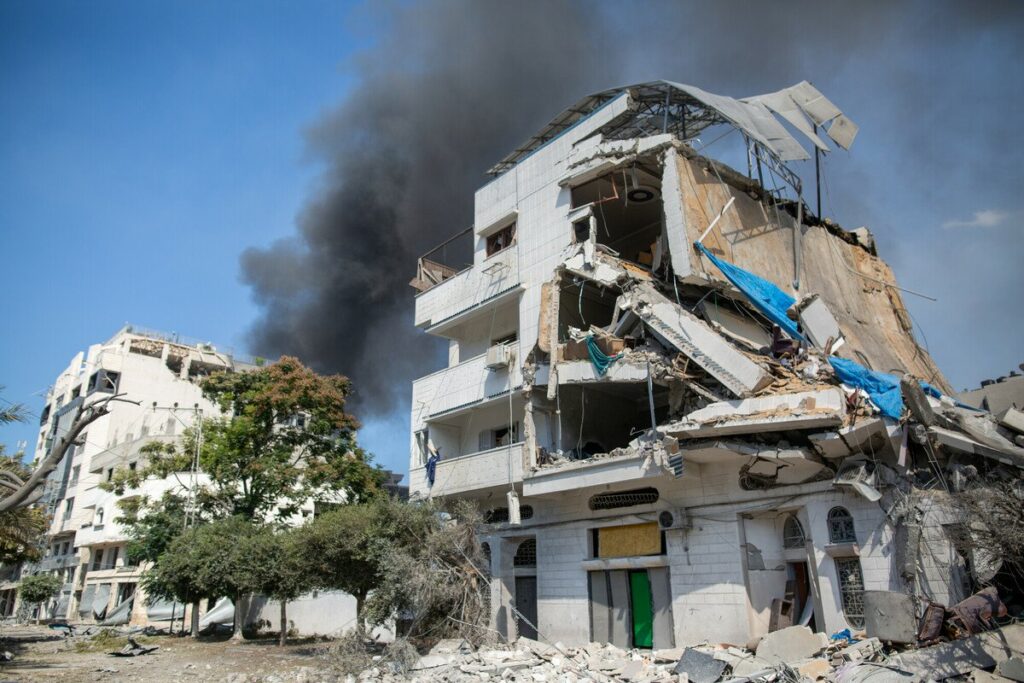What causes a famine?
Famines are usually caused by multiple factors. Since 2020, a deadly combination of conflict, COVID-19, and climate change has dramatically increased the number of people suffering from severe hunger. When compounded by inaction or policy decisions that make people more vulnerable, famine can result and society can collapse.
In Gaza, many challenges are putting people on the brink of famine:
- Following the attack by Palestinian armed militants on October 7, Israel’s bombardment of Gaza has resulted in widespread damage to assets and infrastructure critical for health and food production and distribution.
- Israel’s tightening of the siege on Gaza and systematic denial of humanitarian access to and within the Gaza Strip continues to impede the safe and equitable delivery of lifesaving humanitarian assistance.
- Aid workers in Gaza are being killed and are unable to safely deliver humanitarian aid, increasing the risk of famine.
Political scientist Alex de Waal calls famine a political scandal, a “catastrophic breakdown in government capacity or willingness to do what [is] known to be necessary to prevent famine.” When governments fail to prevent or end conflict—or help families prevent food shortages brought on by any reason—they fail their own people.
What is an example of a famine?
The 1984 Ethiopian famine took the lives of 1 million people, driven in part by drought, conflict, and the policy choices of national and regional authorities. Estimates suggest around 1 million people survived thanks to the delivery of humanitarian aid.
On the evening of Tuesday, October 23, 1984, NBC Nightly News aired footage taken by an Ethiopian videographer that showed scores of deceased people on stretchers that were being taken toward makeshift graveyards. Though the scenes inspired a robust international response, its nature overlooked the capacity of communities affected by the famine to help themselves.
By the next morning, Oxfam America had received over 300 calls an hour from people like you who wanted to help. During the relief effort, feeding centers provided hungry people with food rations. Makeshift hospitals supported severely dehydrated people with IVs, providing shots of tetracycline to fight infection. Oxfam delivered protein and fat-fortified biscuits to those in need that saved many lives, but some could not eat them—their mouths riddled with open sores because of dehydration.
“These scenes of death and dying in the famine camps in Ethiopia were beyond the American experience, beyond anyone’s comprehension,” recalls Bernie Beaudreau, an Oxfam staffer at the time.



